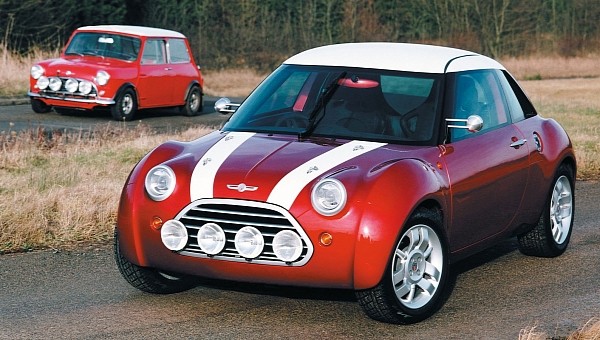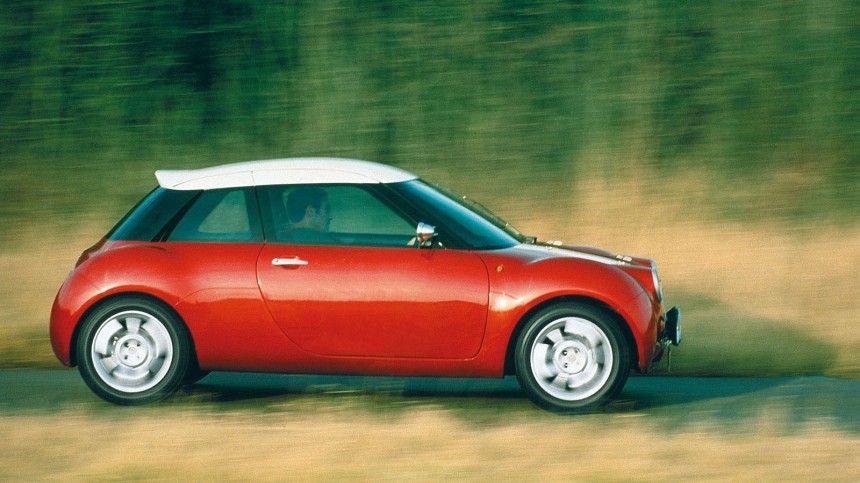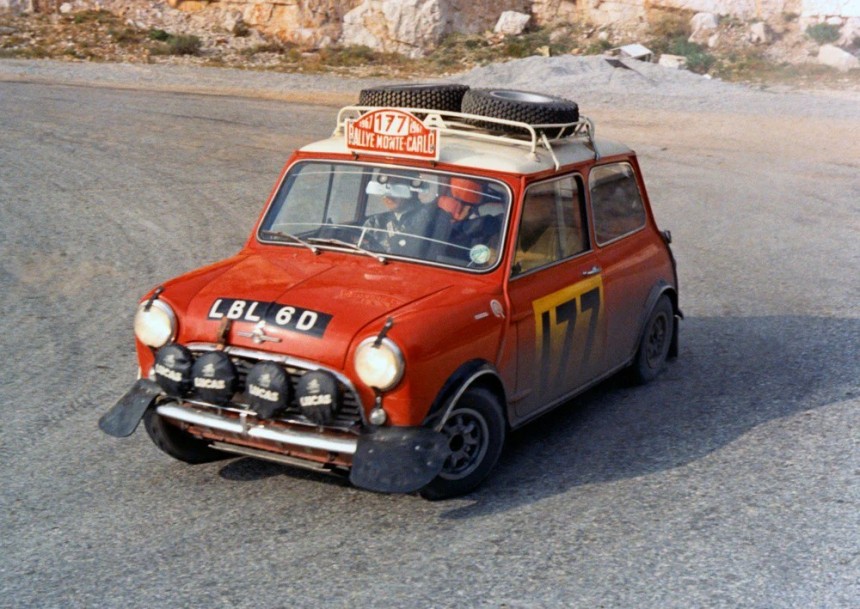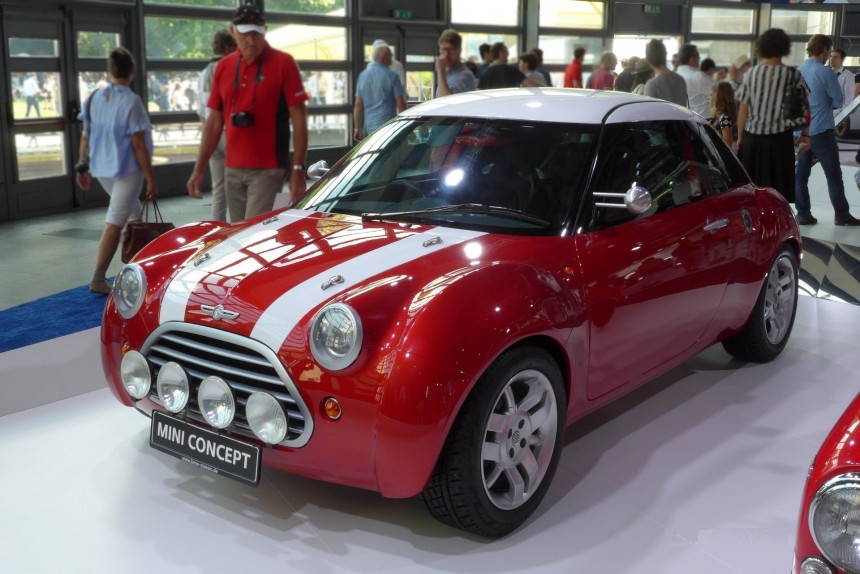MINI tested its social media followers pool and posted a short concept car video to see what reactions the brand's loyalists would feed back. As it turns out, it both backfired and stirred interest, as the internet stormed up a contradictory wave of considerations about the car.
However, the joke's on somebody else here, as the German-owned British icon pulled a prank with a concept vehicle from 1997. The catch is that the carmaker "forgot" to mention this small timeframe detail in its Instagram post. And boy, did they get a reaction! Or two, to be specific, as most comments are either head over (w)heels for it or dead against it.
Well, the car in question – or the matter of debate, if you will – is the ACV30. I will admit that this vehicle wasn't christened in the usual MINI nomenclatorial fashion. Still, this vehicle wasn't the regular, everyday, normal "mother's shopper" tiny car.
Launched in 1997, precisely three decades after the 1967 Monte Carlo Rally (read on for the synopsis), the ACV – Anniversary Concept Vehicle – was based on a somewhat counterintuitive platform. The chassis was borrowed from an MG F. As such, the 1.8-liter inline-four engine was transversely mounted just in front of the rear axle.
This MINI emphasized other features of this conceptual prophecy of the 2000s generation. Explicitly linking to the original Mini, the "circle" headlamps and angular grille bore reminiscence of the minuscule British automobile from the late 50s.
Also, the non-color-keyed roof, hood stripes, and front badge were inspired by The Italian Job petrol-powered superstar. (The Italian Job is a movie filmed in 1969, with a remake in 2003. Both involved heavy car chase scenes with three MINIs).
The ACV30 was named in honor of the Monte Carlo Rally in 1967 (hence the "30"), when a Morris Mini Cooper S snagged the trophy from the likes of Lancia, Porsche, or Renault. In 1997, BMW wanted to refresh the Mini brand and presented the concept to the public. The four additional grille-installed headlamps are the most visual cue paying homage to the '67 red Mini that won the world's most famous rally race.
Fast forward to December 2022, and MINI drops off this gem on their Instagram account. The comments range from ecstasy to agony, with little to nothing between these two extremes. It's either adorable or blasphemously ugly, according to the comments list, which is biased about the 25-year-old prospect.
The opinions range from "Wow!!! Futuristic!" (funny that someone should say this about an old design) to the less respectful "looks like my pup when she ate a bee and swelled up." Some even threw in American muscle references (for some unknown reason). "It's like a Mini and a '61 Corvette had a shameful love child." (No, it's not). Or "it looks like a Mini Cooper S crossed with a Shelby Cobra." (It does, actually).
My favorite is this: "Meh, it's headed in the right direction, but not quite all the way there. Needs some tweaks." Right in the middle between downright hatred and adulation. And BMW did just that with the concept: it put some new twists on the idea and revived the legend.
The MINI did not carry over the general profile of the ACV30, nor did it adhere to the RMR layout (Rear-Mid Engine, RWD). The Germans did stick to the contrasting two-tone paint scheme for the roof and body, the blackened pillars, overall softened lines and bold wheel arches. Something that endures to this day.
Well, the car in question – or the matter of debate, if you will – is the ACV30. I will admit that this vehicle wasn't christened in the usual MINI nomenclatorial fashion. Still, this vehicle wasn't the regular, everyday, normal "mother's shopper" tiny car.
Launched in 1997, precisely three decades after the 1967 Monte Carlo Rally (read on for the synopsis), the ACV – Anniversary Concept Vehicle – was based on a somewhat counterintuitive platform. The chassis was borrowed from an MG F. As such, the 1.8-liter inline-four engine was transversely mounted just in front of the rear axle.
Also, the non-color-keyed roof, hood stripes, and front badge were inspired by The Italian Job petrol-powered superstar. (The Italian Job is a movie filmed in 1969, with a remake in 2003. Both involved heavy car chase scenes with three MINIs).
The ACV30 was named in honor of the Monte Carlo Rally in 1967 (hence the "30"), when a Morris Mini Cooper S snagged the trophy from the likes of Lancia, Porsche, or Renault. In 1997, BMW wanted to refresh the Mini brand and presented the concept to the public. The four additional grille-installed headlamps are the most visual cue paying homage to the '67 red Mini that won the world's most famous rally race.
The opinions range from "Wow!!! Futuristic!" (funny that someone should say this about an old design) to the less respectful "looks like my pup when she ate a bee and swelled up." Some even threw in American muscle references (for some unknown reason). "It's like a Mini and a '61 Corvette had a shameful love child." (No, it's not). Or "it looks like a Mini Cooper S crossed with a Shelby Cobra." (It does, actually).
The MINI did not carry over the general profile of the ACV30, nor did it adhere to the RMR layout (Rear-Mid Engine, RWD). The Germans did stick to the contrasting two-tone paint scheme for the roof and body, the blackened pillars, overall softened lines and bold wheel arches. Something that endures to this day.













